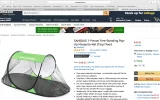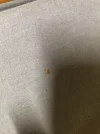In the bed bug forum you will see reports from pilgrims regarding bed bugs.
Please know that although an albergue is reported to have had bed bugs, it does not automatically mean that this albergue is a bad albergue. Pilgrims stay in new albergues every day, and someone might have walked in that day with bed bugs... and some other pilgrim might have picked it up before they had time to clean it.
That said, if a particular albergue comes up again and again with bed bugs, that might be an indication that hygiene might not be ideal there.
If you are reporting a particular refugio/albergue please include a date in your title so that people scanning this forum can see when the problem occurred.
Thanks!
Ivar
Please know that although an albergue is reported to have had bed bugs, it does not automatically mean that this albergue is a bad albergue. Pilgrims stay in new albergues every day, and someone might have walked in that day with bed bugs... and some other pilgrim might have picked it up before they had time to clean it.
That said, if a particular albergue comes up again and again with bed bugs, that might be an indication that hygiene might not be ideal there.
If you are reporting a particular refugio/albergue please include a date in your title so that people scanning this forum can see when the problem occurred.
Thanks!
Ivar
Last edited:


























